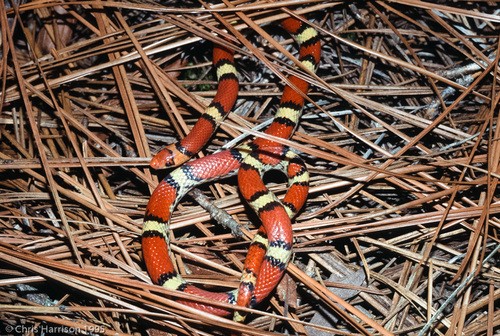Northern scarlet snake
A species of Scarlet snakes Scientific name : Cemophora coccinea copei Genus : Scarlet snakes
Northern scarlet snake, A species of Scarlet snakes
Scientific name: Cemophora coccinea copei
Genus: Scarlet snakes
Content
Description General Info
Description
Northern scarlet snake utilizes a complex defensive mechanism, emitting a foul odor when threatened, serving as an effective deterrent to predators. This nocturnal creature is a carnivorous species, feeding primarily on small reptiles. Uniquely, the offspring of northern scarlet snake display high levels of independent behavior right from birth, often dispersing shortly after to seek solitary life.
General Info
Lifespan
15-20 years
Diet
Northern scarlet snake primarily subsists on a diet of small reptiles, such as lizards and juvenile snakes. Their specialized eating habits also include amphibians, making them opportunistic carnivores.
Appearance
Northern scarlet snake is a small, slender snake with smooth scales. Its striking scarlet red coloration is adorned with ring-like bands of black and yellow. Juveniles share this vibrant pattern, but display a hue more orange than red. There's no significant difference in appearance between genders or based on age, beyond the color shift from juvenile to adult. The snake is sans appendages like wings or horns.
Behavior
Northern scarlet snake displays diurnal activity, primarily hunting small vertebrates. As a non-venomous species, it uses its bright coloration to deter predators. Territorial disputes involve non-fatal biting or wrestling. Solitary in nature, northern scarlet snake interacts with others mainly during the breeding season. It uses its keen sense of smell to locate mates and prey within its primary habitat: sandy, scrubby areas and pine flatwoods.
Scientific Classification
Phylum
Chordates Class
Reptiles Order
Lizards and snakes Family
Colubrids Genus
Scarlet snakes Species
Northern scarlet snake 